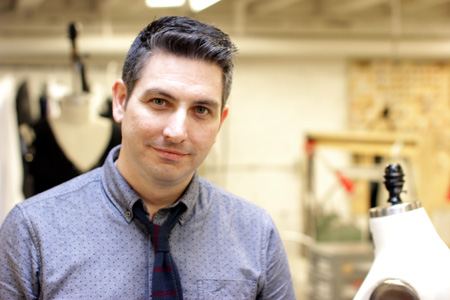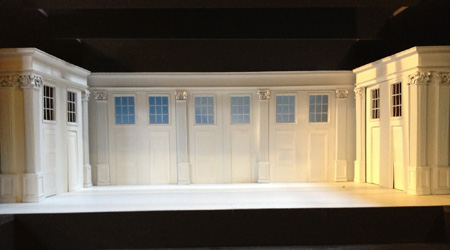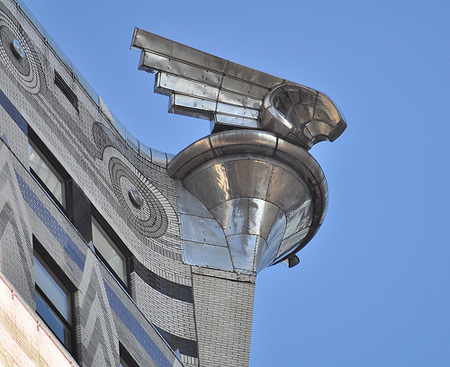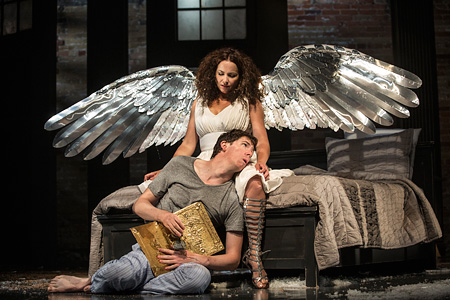Bringing Angels to Life: An Interview with Lorenzo Savoini

Soulpepper Resident Designer and Designer of Angels in America, Lorenzo Savoini. Photo: Nathan Kelly
How did you approach the job of designing Angels in America?
I put a lot of effort into breaking down the scripts. Much more then I usually do, because it is such a massive, sprawling piece of theatre. This meant tracking the journey of all the different characters, pulling out all the suggested costume changes and props involved, and the many, many locations that need to be represented. Lists, lists, lists. It’s simply a process of pulling out the facts and tracking the basic practical requirements of the play. I needed to take the time to feel like I could see both plays with a kind of bird’s-eye perspective on all of it. And then a lot of analysis and secondary reading went into it as well. I tried to find interviews where Kushner talks about the plays, and to no surprise I found his insights quite helpful. These plays are a well thought out piece of architecture, and more than usual I found myself needing to just walk around it and meditate on it for some time.
When I felt confident, I began to explore different forms, looking at specific scenes and what they might need, but also how to encase all these scenes in a larger metaphorical container or idea. It is rarely one spark of an idea that sets me in one direction, but more of a slow burn toward an idea. Lots of little sketches, research, discussions with director (Albert Schultz), model work and, of course, going back to the play over and over again.
What are some of the challenges designing for such a big production?
I think one challenge was figuring out how to best solve the many locations required through six or more hours of theatre. Albert and I decided it would be more interesting to not map out every location before going into rehearsal, so without knowing exactly where scenes might take place I had to create an environment that could allow for a degree of flexibility and for opportunity when playing in rehearsal. The narrative needs to really move along and I realize now, more than I did in the preliminary phase, just how important it is that the staging be fluid and uninterrupted by set changes. Albert’s approach is working beautifully, and I am excited about how it is all developing.
Certainly I think the biggest challenge we face with this play is its sheer scope, and bold theatricality. At first you are thinking, “How on earth are we going to do that?”, but then you solve that technical mountain, only to see higher peaks ahead. The theatre stage is spatially finite. It is because we literally can’t accommodate every location realistically that we are forced to actually solve locations in a more interesting way that is inherently theatrical and hopefully poetic. This often translates into having to engage the audience’s imagination. I think Kushner writes these impossible technical feats into these plays with a great deal of faith in the imagination of the theatre and its audience. But still… “Gulp”.
What’s exciting about designing Angels in America?
Angels in America is one of my favourite plays, so it is a real thrill to see it come to life with a group of actors I hold in such high regard. There is so much to be excited about – Angels that come crashing through ceilings, books that rise from the floor and explode into flames, characters that meet in shared dreams, scenes that take place on earth and in heaven, and on and on. I think mostly, however, it is exciting to explore Kushner’s thinking. His ideas – this incredibly woven play – it’s quite humbling. It is a huge feast for everyone working on it.
Where did you look for inspiration?
Mostly my inspiration came from Kushner’s script. There are so many interesting themes and ideas presented throughout both parts, that I began to focus on a few that I thought should be suggested in the stage environment. Mostly I was inspired by the idea of “America” being represented – America as a theory, a machine that is always in the state of motion, that is trying to move toward something. Simultaneously, Kushner parallels these large themes of motion, migration, and change in America into the specific lives of each character. They are transitioning from one location to another, from realistic locations to metaphysical ones, from the state of healthy to sick, from one relationship to another, etc. There is always the big picture and the small picture juxtaposing each other in this play, and the design was certainly inspired by this. A series of doors became a very important visual motif in the set design, as is the suggestion of American neo-classical architecture they are placed within. But ultimately the set design is a container that can kind of expand and contract, provide containment and also explode open.
What are some design details you can share?
Wow, there are so many to choose from. Most of the actors play multiple characters over both plays. Nancy Palk, for example, plays Hannah who is likely the closest character to her. But she then also plays several male characters, a very old Rabbi, an even older Bolshevik character, and Roy Cohn’s doctor, and if that wasn’t enough, she also plays the ghost of Ethel Rosenberg. Each character undergoes physical transformations through costumes and wigs, which often has to be done very quickly backstage. In fact, I imagine the whole show will be a kind of controlled chaos. Each actor traveling through the play having to constantly remember their track and how to perform their quick changes.
The Angel is also another neat detail. She will have two dresses and wings that span eight feet, and all made by our costume and prop departments. They are not your traditional white feathered angel wings, but a bit more stylized. It is kind of like the Angel has been merged with The Chrysler building. The wings will be made of steel, fiberglass, and plastic, while feathers will be made out of various iridescent fabrics all layered together. The process is actually quite time consuming and from first sketch to final product it will have taken around six or seven weeks. I’m so looking forward to audiences seeing the final product.


